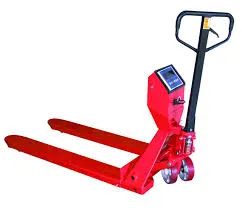


Safety Equipment for Working at Heights A Comprehensive Guide
Working at heights poses significant risks that can lead to severe injuries or fatalities. As industries increasingly demand tasks to be performed at elevated levels, the importance of using appropriate safety equipment cannot be overstated. This article discusses essential safety equipment for working at heights, highlighting its importance, types, and best practices to ensure a secure working environment.
Understanding the Risks
The hazards associated with working at heights are numerous. Falls from ladders, scaffolding, roofs, or other elevated surfaces account for a considerable percentage of workplace injuries and deaths. Factors contributing to these accidents include slippery surfaces, inadequate fall protections, and the manipulation of equipment in unstable conditions. Therefore, proper safety measures and equipment are critical in mitigating these risks.
Essential Safety Equipment
1. Personal Fall Arrest Systems (PFAS) A PFAS is one of the most crucial elements of safety equipment for working at heights. It typically includes a full-body harness, lanyards, and anchorage points. The harness distributes the force of a fall across the body, while lanyards connect the harness to a secure anchor point, preventing workers from hitting the ground.
2. Guardrails and Safety Nets Permanent guardrails are an effective way to prevent falls. These barriers should be installed around open edges and platforms, providing a physical boundary. Safety nets can be used as an additional layer of protection, designed to catch a falling worker before they hit the ground.
3. Ladders and Scaffolding Equipment When working at heights, choosing the right ladder or scaffolding is paramount. Ladders must be suitable for the specific task and rated for the load they will carry. Scaffolding should be assembled correctly, with all parts secured to prevent collapses. Regular inspections are vital to ensure their integrity.
4. Helmets and Head Protection The risk of falling objects adds another layer of danger when working at heights. Hard hats equipped with chin straps are essential for protecting workers' heads. These helmets can reduce the risk of severe injuries from falling tools or debris.
5. Footwear with Slip Resistance Proper footwear is critical for workers operating in elevated environments. Anti-slip shoes or boots are designed to provide traction, reducing the likelihood of slips and falls. They should also be comfortable to support long hours of work.

6. High-Visibility Clothing In jobs where workers are performing tasks at heights amongst heavy machinery or busy sites, high-visibility clothing can significantly enhance safety. Brightly colored clothing ensures that workers are easily seen, reducing the risk of accidents.
7. Rescue Equipment Despite all safety measures, emergencies can still occur. Having rescue equipment on-site, such as rescue harnesses, stretchers, and communication devices, is crucial. Workers should be trained in emergency response procedures to ensure quick and effective reactions during a fall or other accidents.
Best Practices for Safety
While having the right equipment is essential, how it is used is equally important. Here are some best practices for ensuring safety while working at heights
- Training Ensure that all workers receive proper training on the use of safety equipment and fall protection best practices. This includes understanding how to wear a harness correctly and knowing the specifications for various types of equipment.
- Conduct Safety Assessments Before beginning any work at heights, conduct thorough safety assessments of the site. Identify potential hazards and determine the most effective safety measures to mitigate risks.
- Regular Inspections All safety equipment should undergo regular inspections to ensure that it is in good working condition. Replace any damaged or worn-out equipment immediately.
- Create a Culture of Safety Foster an environment where workers feel empowered to speak up about safety concerns. Encourage reporting of unsafe conditions and provide avenues for suggestions to improve safety measures.
Conclusion
The importance of safety equipment for working at heights cannot be emphasized enough. By utilizing the right tools and following best practices, workplaces can drastically reduce the risks associated with elevated tasks. A proactive approach to safety not only protects workers but also enhances overall productivity and morale. Investing in safety equipment and training is not just a legal obligation; it is a commitment to the well-being of every employee. In a field where heights can be perilous, safety must always go hand in hand with work.



